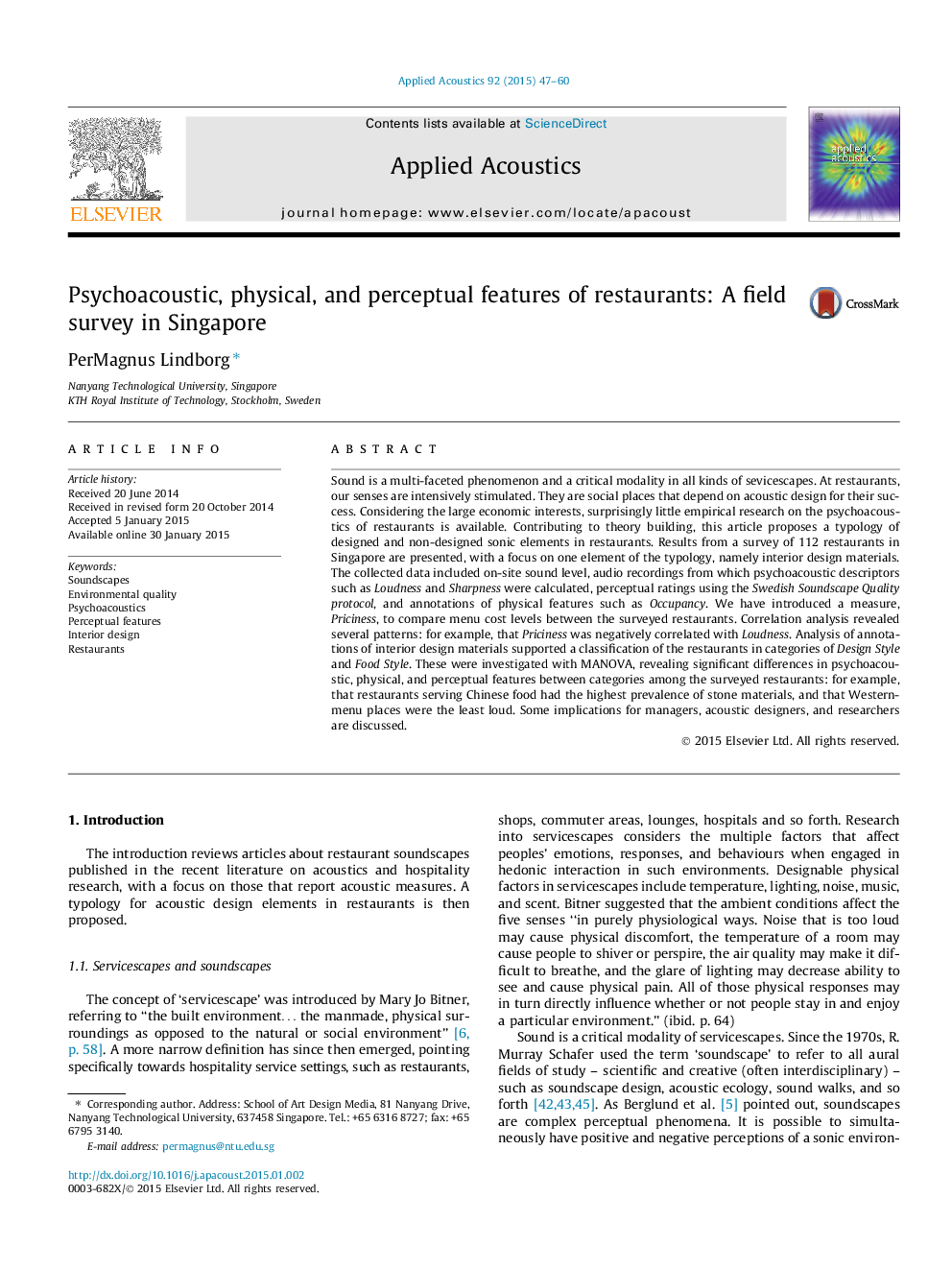| Article ID | Journal | Published Year | Pages | File Type |
|---|---|---|---|---|
| 754290 | Applied Acoustics | 2015 | 14 Pages |
•We propose a typology of acoustic design elements relevant to restaurants.•Empirical results from a survey of 112 restaurants in Singapore are presented.•Correlation analysis revealed relationships between various features.•Interior design materials supported classifications by Design Style and Food Style.
Sound is a multi-faceted phenomenon and a critical modality in all kinds of sevicescapes. At restaurants, our senses are intensively stimulated. They are social places that depend on acoustic design for their success. Considering the large economic interests, surprisingly little empirical research on the psychoacoustics of restaurants is available. Contributing to theory building, this article proposes a typology of designed and non-designed sonic elements in restaurants. Results from a survey of 112 restaurants in Singapore are presented, with a focus on one element of the typology, namely interior design materials. The collected data included on-site sound level, audio recordings from which psychoacoustic descriptors such as Loudness and Sharpness were calculated, perceptual ratings using the Swedish Soundscape Quality protocol, and annotations of physical features such as Occupancy. We have introduced a measure, Priciness, to compare menu cost levels between the surveyed restaurants. Correlation analysis revealed several patterns: for example, that Priciness was negatively correlated with Loudness. Analysis of annotations of interior design materials supported a classification of the restaurants in categories of Design Style and Food Style. These were investigated with MANOVA, revealing significant differences in psychoacoustic, physical, and perceptual features between categories among the surveyed restaurants: for example, that restaurants serving Chinese food had the highest prevalence of stone materials, and that Western-menu places were the least loud. Some implications for managers, acoustic designers, and researchers are discussed.
